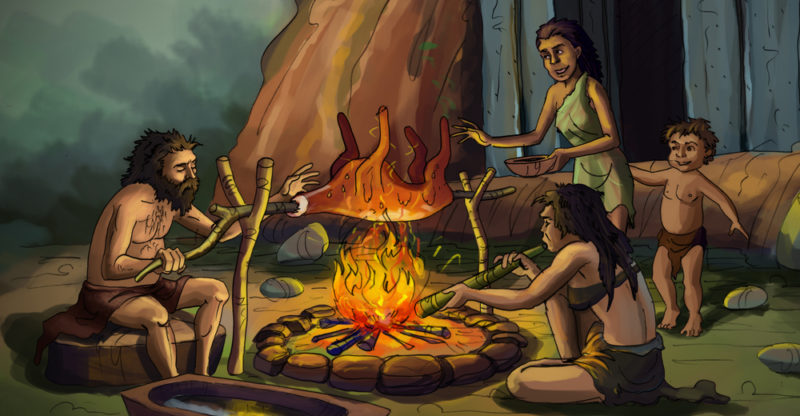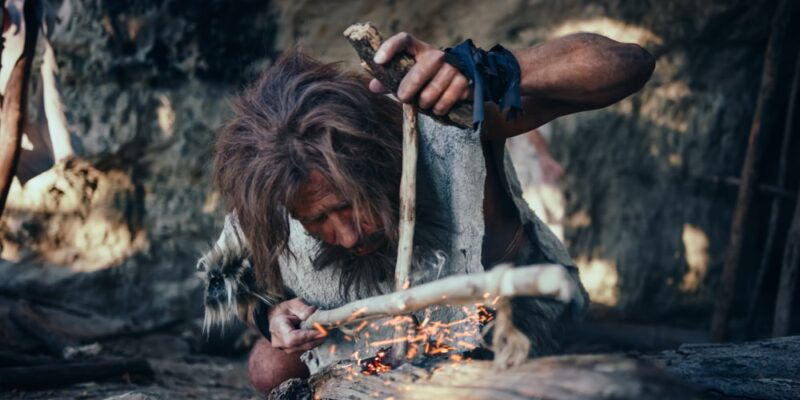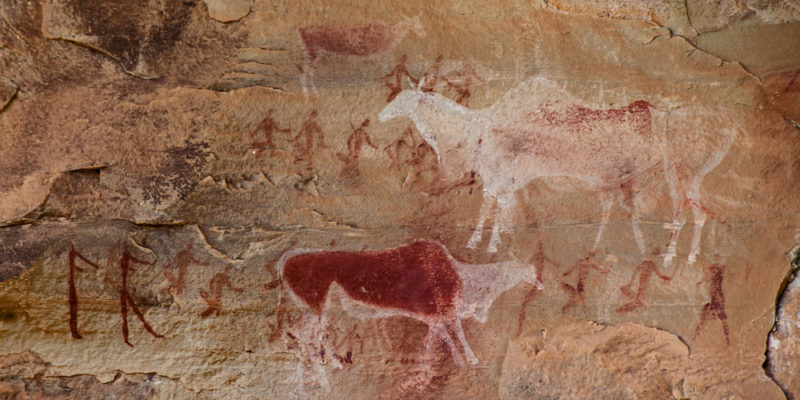We explain what prehistory is, and discuss its main characteristics. In addition, we explore its time periods, prehistoric art, and more.

What is prehistory?
Prehistory is the period comprising the emergence of the first hominids, around 2,500,000 years ago, until roughly 3000 BC, with the invention of writing in Lower Mesopotamia, which marked the beginning of human history.
This was an extended era whose origin dates back to the earliest known use of stone tools for hunting, followed by the evolution of the human species who learned to cultivate the land and introduced agriculture, culminating in the establishment of settlements and city-states governed by their own rules and religious rites, before the invention of writing systems.
Prehistory is divided into two main time periods:
- The Stone Age. It lasted approximately from 2,500,000 years ago to 4000 BC. This period is divided into the Paleolithic, Mesolithic, and Neolithic.
- The Metal Ages. It stretched from 5000 to 1000 BC. This period is divided into the Copper Age, the Bronze Age and the Iron Age.
- See also: Prehistoric man
Characteristics of prehistory
Prehistory was characterized by:
- The evolutionary leap of hominids, when early humans learned to control fire, which they used to keep away wild animals, and as a heat source during nights in caves.
- Evidence of stone tool workmanship, like hand axes with sharp edges, and hammerstones.
- The development of a primitive culture, marked by activities like hunting, fishing, and gathering.
- A nomadic lifestyle. Humans foraged in small groups and lived in caves.
Prehistoric time periods

Prehistory is divided into two broad archaeological periods:
The Stone Age. It is the longest period of prehistory encompassing several human evolutionary leaps, as well as stone working. It is subdivided into the following periods:
- Paleolithic. It corresponds to the earliest prehistoric period, extending from 2,500,000 years ago to 35000 BC. Its name, derived from Greek meaning "old stone", embodies significant advancements like chipped stone working by Homo habilis, which allowed him to manufacture tools for hunting, and the control of fire by Homo erectus, which allowed him to defend himself from wild animals and to settle in caves for long periods of time.
- Mesolithic. Spanning the period from 10000 to 6000 BC, the Mesolithic is characterized by advances in polished stone work, and a transition from a nomadic to a sedentary lifestyle. This change was spurred by several factors including the end of the Ice Age, a gradual climate change in which temperatures became increasingly warmer, the control of fire for heating, which allowed men to tolerate cold temperatures, as well as early sowing and food growing.
- Neolithic. It covered the period from 6000 to 4000 BC. The Neolithic witnessed carved and polished stone working, advances in agriculture, and the domestication of different animals, which allowed the consolidation of a sedentary way of life and larger community settlements.
- See also: Stone Age
The Metal Ages. This second period of prehistory, which started in 5000 and ended 1000 BC, represented the most significant prehistoric changes in human evolution. The Metal Ages is further subdivided into the following periods:
- The Copper Age. Extending from 5000 to 3000 BC, this period saw the invention of the wheel and the advent of metalworking, particularly copper, for the manufacture of tools for plowing the land, arrowheads, and utensils.
- The Bronze Age. This period, which lasted from 3000 to 1500 BC, was distinguished by the discovery of alloying, by smelting copper with tin, which gave rise to bronze, a resistant metal. This facilitated the production of tools for warfare, such as arrowheads. As communities and cities expanded, conflicts over territory and power increased.
- The Iron Age. It extends from 1500 until the invention of writing, in 550 BC, which marks the beginning of human history. This period was characterized by iron working, a more resistant material that expanded the manufacture of items such as weaponry and farming tools. Iron smelting required the use of stone furnaces capable of enduring high temperatures.
- See also: Metal Ages
Prehistoric art

Prehistoric art represented one of the earliest ways to communicate, alongside gestures and sounds made by primitive humans. It served as a medium to narrate customs and impart acquired knowledge to subsequent generations, in an era when writing did not yet exist.
The earliest type of art was cave art, consisting of representations of animals, hunting scenes and tracings of human hands on walls inside caves. The most well-known evidence of cave paintings was found in the caves of Altamira, in Spain, and Lascaux, in France.
The earliest sculptures were made in the Middle Paleolithic, crafted in stone, bones and later, clay, and consisted of simple figures of animals and human females. They would have represented religious rites.
Towards the latter part of prehistory, especially during the Metal Ages, advances in artistic techniques were significant, featuring metal sculptures and ornamental details.
Explore next:
References
- “The prehistoric ages: how humans lived before written records”. History.
- “Stone Age”. Britannica.
- “Prehistory: 5 things you should know” (video). Smile and learn.
- “Mesolítico”. Historiando.
- “El arte en la prehistoria”. Dialnet.
Was this information useful to you?
Yes NoThank you for visiting us :)